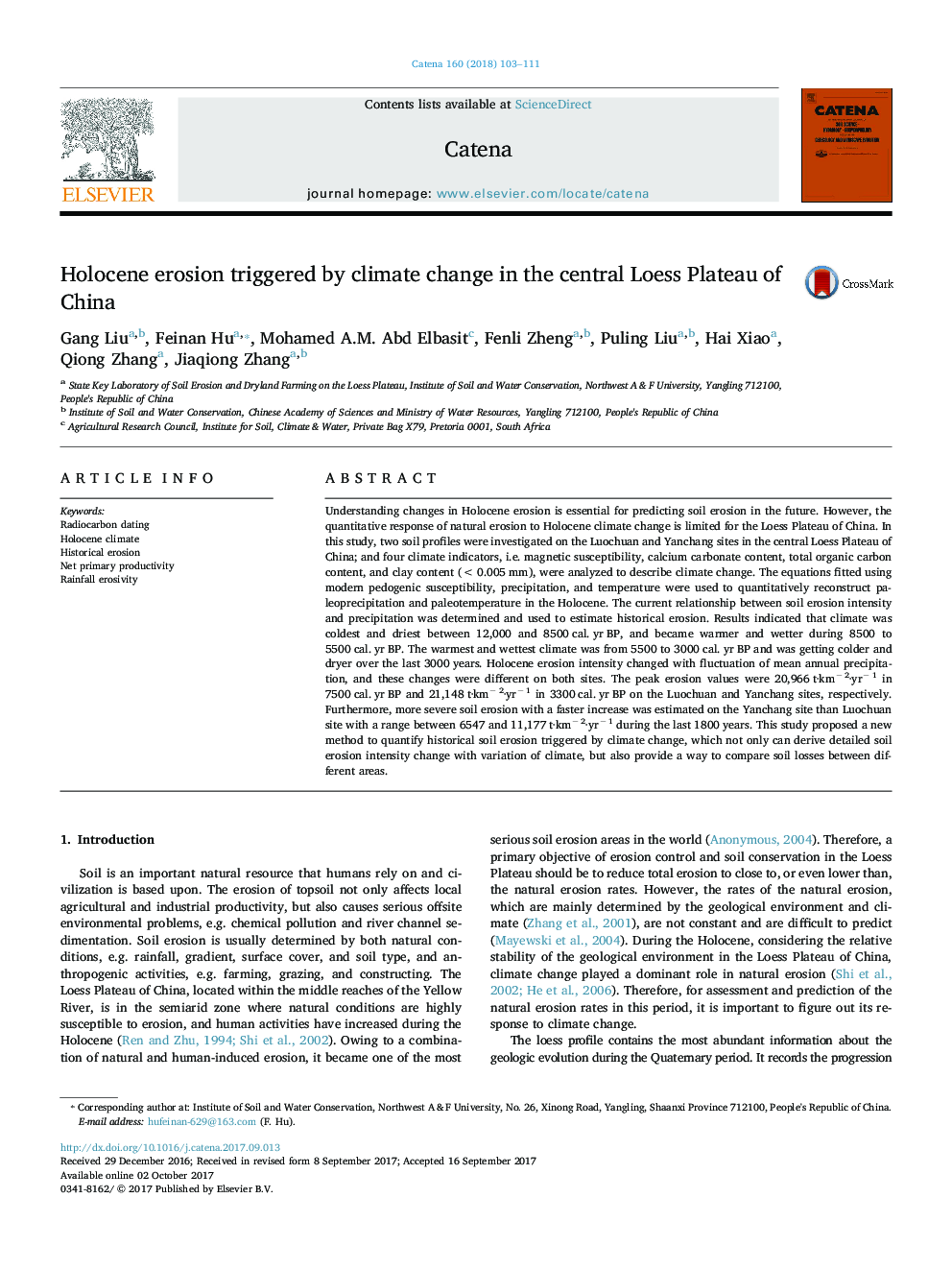| Article ID | Journal | Published Year | Pages | File Type |
|---|---|---|---|---|
| 5770031 | CATENA | 2018 | 9 Pages |
Abstract
Understanding changes in Holocene erosion is essential for predicting soil erosion in the future. However, the quantitative response of natural erosion to Holocene climate change is limited for the Loess Plateau of China. In this study, two soil profiles were investigated on the Luochuan and Yanchang sites in the central Loess Plateau of China; and four climate indicators, i.e. magnetic susceptibility, calcium carbonate content, total organic carbon content, and clay content (< 0.005 mm), were analyzed to describe climate change. The equations fitted using modern pedogenic susceptibility, precipitation, and temperature were used to quantitatively reconstruct paleoprecipitation and paleotemperature in the Holocene. The current relationship between soil erosion intensity and precipitation was determined and used to estimate historical erosion. Results indicated that climate was coldest and driest between 12,000 and 8500 cal. yr BP, and became warmer and wetter during 8500 to 5500 cal. yr BP. The warmest and wettest climate was from 5500 to 3000 cal. yr BP and was getting colder and dryer over the last 3000 years. Holocene erosion intensity changed with fluctuation of mean annual precipitation, and these changes were different on both sites. The peak erosion values were 20,966 t·kmâ 2·yrâ 1 in 7500 cal. yr BP and 21,148 t·kmâ 2·yrâ 1 in 3300 cal. yr BP on the Luochuan and Yanchang sites, respectively. Furthermore, more severe soil erosion with a faster increase was estimated on the Yanchang site than Luochuan site with a range between 6547 and 11,177 t·kmâ 2·yrâ 1 during the last 1800 years. This study proposed a new method to quantify historical soil erosion triggered by climate change, which not only can derive detailed soil erosion intensity change with variation of climate, but also provide a way to compare soil losses between different areas.
Related Topics
Physical Sciences and Engineering
Earth and Planetary Sciences
Earth-Surface Processes
Authors
Gang Liu, Feinan Hu, Mohamed A.M. Abd Elbasit, Fenli Zheng, Puling Liu, Hai Xiao, Qiong Zhang, Jiaqiong Zhang,
